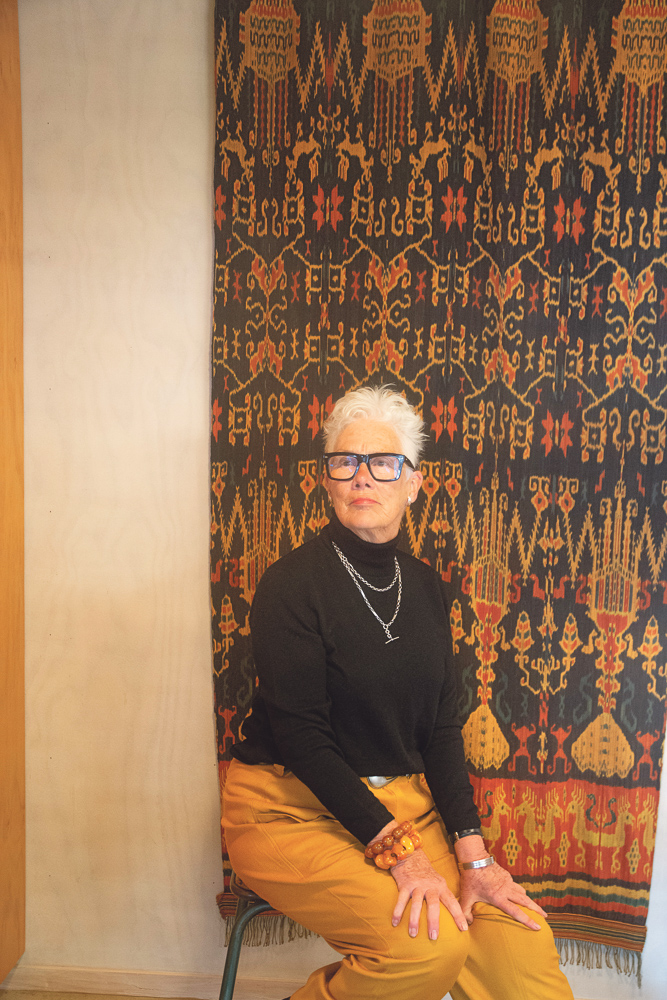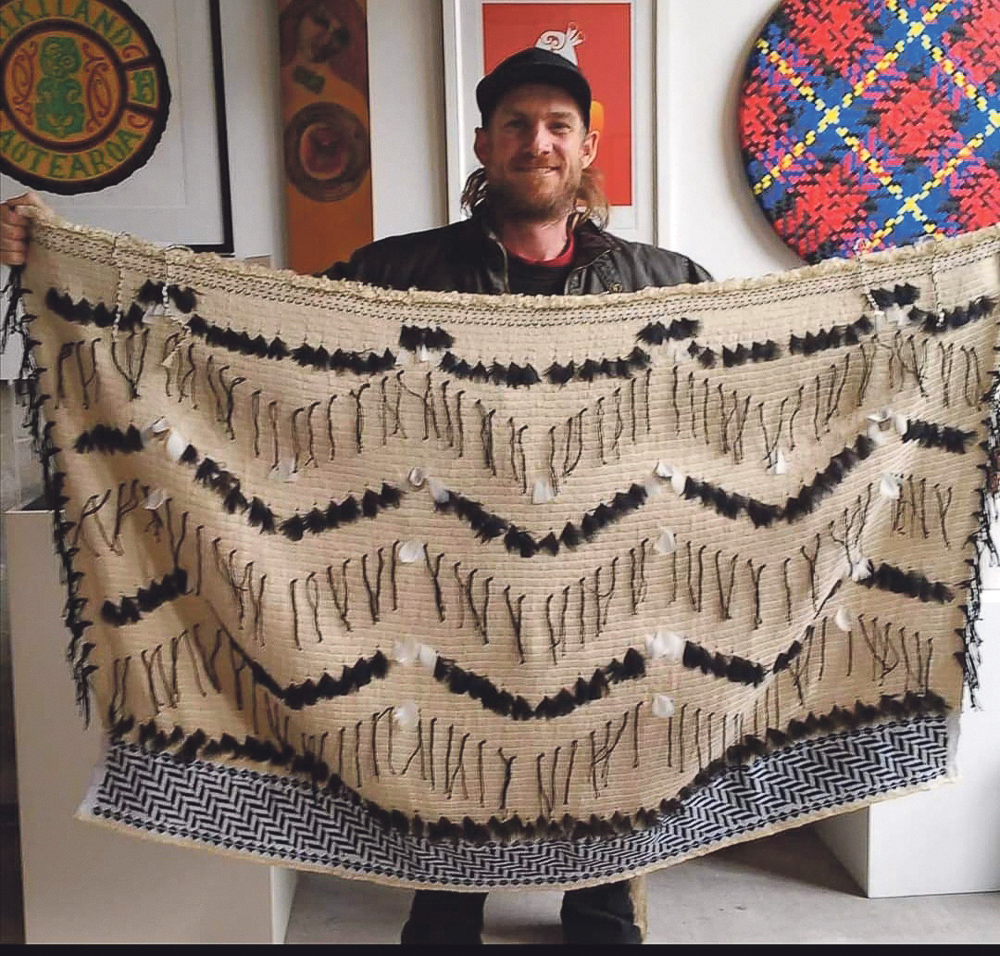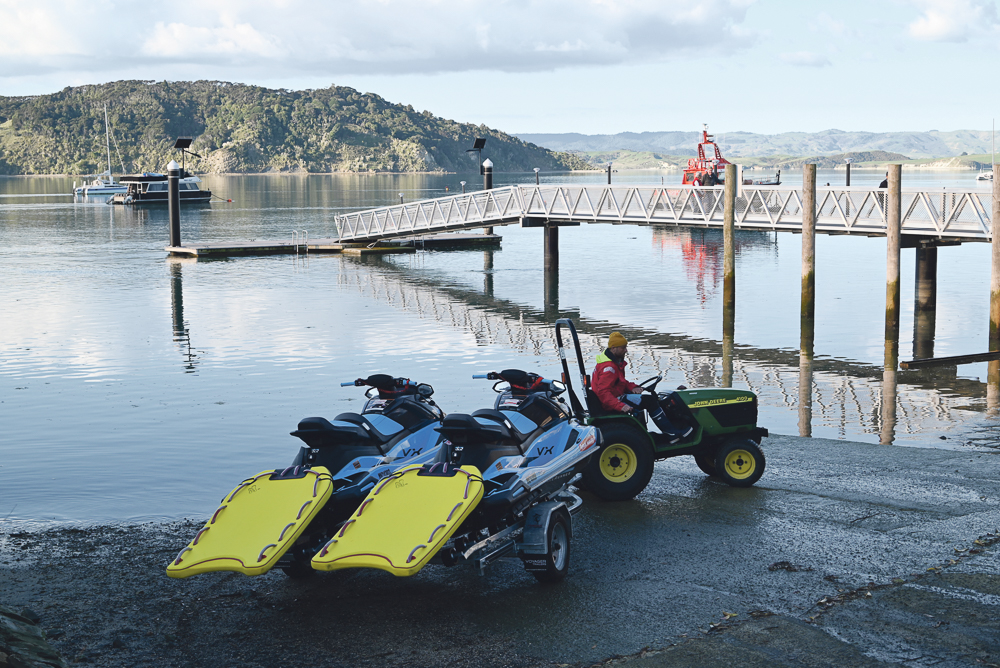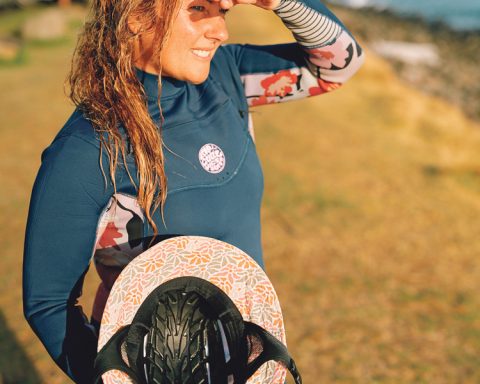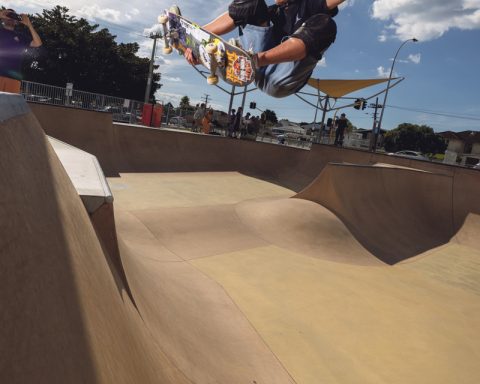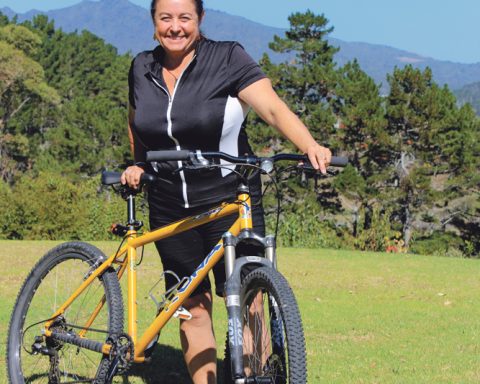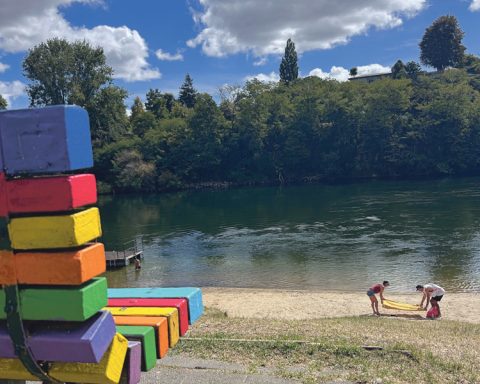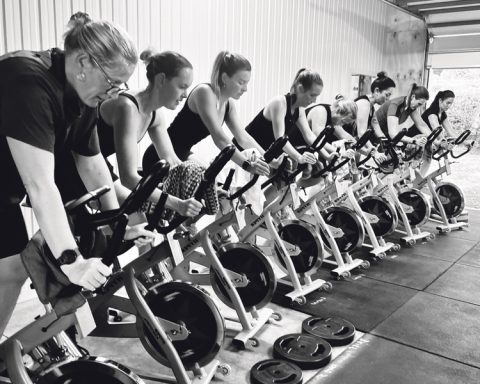Raglan textile artist Jean Carbon returned recently from Indonesia feeling freshly inspired – accompanied by “treasures” from the remote islands of Sumba and Flores, and with dyes still on her fingernails from a five-day workshop in Ubud.
The reinvigorating two-and-a-half week textile tour has her now “thinking of the Raglan art trail and an exhibition later in the year,” she told the Local Rag from her barn-style home overlooking Ngarunui Beach, her ikats draped artfully over a sofa as she explained how painstakingly these traditional Indonesian fabrics are woven and tie-dyed in the villages she visited.
“They’re very treasured,” she added, pointing out the decorative technique adorning a large piece of black cloth which could feasibly be made into a fashion garment with the addition of a black bodice.
Jean’s passion is fabric, its history and origins, and the many ways it can be patterned, coloured and decorated to create garments or works of art. She’s also been the face behind Raglan’s biennial Art to Wear event for the past 20 years or so.
No surprise then that while she was leaning earlier this year towards a trip to Japan – to glean more about the ancient resist dyeing techniques of Shibori she practises on silk fabrics – Jean did an about-turn and came up with Indonesia on her google search of textile tours.
“It was meant to be,” she says adamantly. “And I’d get to see ikats.”
Jean strokes another of the richly patterned ikats she’s brought home. “This one took a year to make,” she explains of the handwoven treasure made by just one woman. Whether singly or in groups of (mostly) women, the ancient artform – dating back to the Bronze Age – has been passed down through the generations.
The different patterns have symbolic meaning, Jean adds. For example, the prawn symbolises new life and floral motifs symbolise social life.
Ikat threads are spun by hand from local cotton then drenched in vibrant, natural dyes – red from the bark of trees and shrubs, richer red from madder roots and blues from the leaves of indigo plants.
Jean’s tour group did lots of sampling with all the different colours, which is why “ the dyes are still on my nails”.
Though she’s been working in recent times mostly with synthetic dyes – brought in from France – on her trademark silk scarves and wraps, Jean was so taken with the Indonesian artform she has returned from the tour with Indigo powder to create a Indigo vat and is planning to experiment with New Zealand natural dyes as well.
Jean was away a month all up and on her textile tour throughout the villages of Sumba and Flores half that time, immersed in a “very different” culture. She describes the people as beautiful and loved experiencing daily life with the villagers at grassroots level.
By contrast she was less than enamoured with her three-night stay in Seminyak, on Bali. “It was all about the tourists …cars clogging up narrow roads … scooters and motorbikes up on footpaths.” Ubud, where her five-day natural dye workshop was held, was tourism gone mad, she reckons.
The workshop itself was wonderful, but getting to and fro daily through the traffic from her guesthouse 25 minutes away was complicated. Jean, a seasoned traveller now in her 70s, ended up commuting on the back of a scooter every day courtesy of a kindly Balinese hotel receptionist.
The workshop consisted of a two-day introductory course to natural dyes followed by a three-day practice with indigo vats and natural colours – yellow, chestnut, black – Jean explains. It’s run regularly by an Indonesian-based fair trade business, Threads of Life, that uses culture and conservation to alleviate poverty in rural Indonesia.
Started by an English couple more than 30 years ago, the organisation set out to buy authentic handwoven fabrics from local artisans to on-sell to tourists from its compound in Ubud, thus keeping the tradition alive. For Jean, the hands-on Ubud experience at that very compound was one of the highlights of her trip.
And while she’s returned with more ikats than she knows what to do with, Jean also feels a deep affinity for the whole handweaving-dyeing process repeated in remote Indonesian villages now for 5000 years.
By Edith Symes
